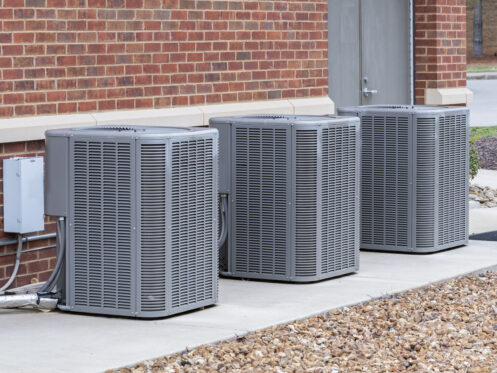The average Fort Mill, SC, home uses about 55% of its energy for heating and cooling. With so much energy being used on HVAC systems, ensuring you invest in the right unit to have maximum service is vital. Fort Mill has hot, humid summers, with temperatures sometimes rising over 90°F, while the winters are mild. The extreme variation in temperature and humidity levels demands that you have an HVAC system that is versatile enough to handle everything. Deciding on a system that can function optimally all year round for your home requires a thorough understanding of the different systems on the market. Here are the specifications of different systems to help you choose the best fit for your home.
1. Split Systems
This is the most common HVAC system that is split into two parts, an indoor and an outdoor unit. The outdoor unit has a compressor, a refrigerant running through coils, and a blower that blows out the hot air. The furnace portion is often installed in the basement. It can run with electricity or gas to heat air that is forced by a fan into the house.
Pros of Split HVAC Systems
For most models, split systems have high energy efficiency with a SEER rating above 25. You can also integrate them with zoning systems, allowing you to control the temperature in different rooms. Thus, you can avoid heating or cooling unused rooms, leading to reduced energy consumption.
Split systems may come packaged with air purifiers and humidifiers, so you do not have to purchase extra systems to maintain a comfortable indoor environment. They are also designed to work with reduced indoor noise; the only sound you may hear is the forced air inside your home.
Cons of Split HVAC Systems
The upfront costs of split systems can be expensive. They require a professional HVAC technician for quality installation so everything operates safely. Long-term use may be more expensive. They are also best suited for large homes with adequate space to store the units. This restricts homeowners with minimal square footage from using this system.
2. Ductless Mini-Split Systems
These are HVAC systems with an independent unit in each room. The indoor units are mounted on walls and connected to the outdoor compressor via conduit.
Pros of Ductless Mini-Splits
The ductwork responsible for air distribution in homes can leak conditioned air, reducing efficiency. Ductless mini-splits reduce this loss, giving you better energy efficiency. They also use inverter technology, making it easier for them to meet temperature needs.
Ductless mini-splits are easy to install and do not take up a lot of space. You can also control individual temperatures for different rooms, which makes this the ideal HVAC system for homes with occupants who have varying preferences.
Cons of Ductless Mini-Splits
Ductless mini-splits are more expensive, with their purchase price rising by about 30% compared to ducted HVAC systems. They also require intensive and regular maintenance to prevent costly repairs or replacements.
Since the indoor unit is mounted on the wall adjacent to the outdoor system, it is more noticeable than other HVAC systems. Even though they can use less energy to heat or cool, you may not have consistent temperature regulation in large homes and during extreme weather conditions.
3. Packaged HVAC Systems
Homes with inadequate spaces can use packaged systems. This is an all-in-one system, with all the components in one cabinet. The cabinet can be placed on a flat rooftop or outdoor cement slab. The cabinet is connected to the rooms via ductwork.
Pros of Packed HVAC Systems
Since the packed system is a single unit, it is easy and more versatile to install, and the cost of installation can be lower. It also requires less space, making it ideal for homes with limited space. This style of unit also offers reduced indoor noise as the unit is located outside or in the ceiling.
Cons of Packed HVAC Systems
The outside installation location exposes these systems to extreme weather conditions, making them vulnerable to damage. They can also accumulate leaves and debris, reducing energy efficiency. If your HVAC system develops problems, it can be hard to troubleshoot if the unit is packaged and in a difficult location.
Every HVAC system has pros and cons, such as upfront costs, operating costs, climate control capacity, energy efficiency, installation requirements, and long-term maintenance. Carefully weighing these factors and consulting the HVAC professionals at Arce Heating & AC can lead to the best system selection for your Fort Mill home. We also provide services for heating and cooling systems and duct cleaning.
Contact Arce Heating & AC today to schedule an appointment.
